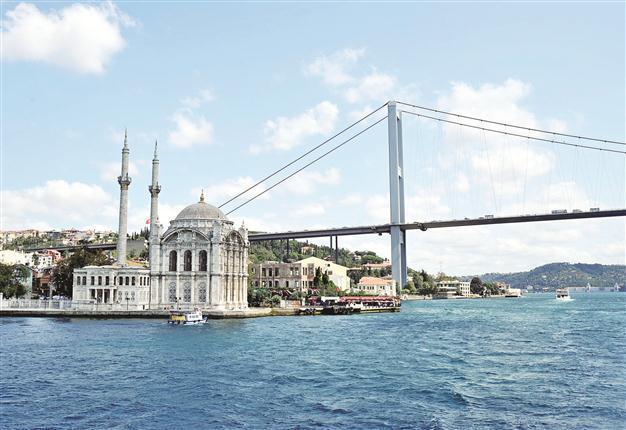Research sheds light on architecture in Ottoman
ISTANBUL - Anatolia News Agency

Associate Professor Selman Can’s detailed published research sheds light on the architects of Ottoman structures that were built in19th century. The architects of most well-known buildings were not the Balyan family, according to the research.Hürriyet photos
Istanbul’s Çırağan Palace’s history consultant Associate Professor Selman Can said the Balyans, one of the well-known Armenian families of the Ottoman Empire, were not the architects of 19th century Ottoman structures but the architect’s contractors.Speaking to the Anatolia news agency, Can said the 19th century was ignored by art historians and architecture historians, and in most research carried out to shed light on this century, the archive sources had not been examined.
“Some of these works give the information that most of the structures built in the late Ottoman period were built by the Balyan family,” he said. “Thousands of documents in the Ottoman archives prove that this information is not correct.”
Can said that before anything else, the position of Armenians in the Ottoman architectural structure in the 19th century should be properly examined. “The number of architects is 52 on the 19th century lists. There is no name of a non-Muslim architect except one dead contractor,” he said.
Since the structural change in the late Ottoman architectural organization was not known, the contractors of the buildings were perceived as their architects, he said. “In the archive lists of the 19th century, there is no one’s name from the Balyan family. Documents saying the Balyans were the palace architects are not true,” he said.
Can said information about the architectural education of the Balyans was also not correct. “Our goal is not to defame different nationalities but to show our true history. The architect of the first Navy school on Heybeli Island was not Kirkor Balyan but the chief architect of the period, Crimean Mahmut Aga. The Dolmabahçe Palace Theater’s architect was not Nikogos Balyan but Italian Gaspare Fossati along with the Grand Reşit Paşa Palace in Baltalimanı.
“The architect of Taşkışla Military Post and Harbiye School was not Serkis Balyan but British architect William James Smith. Sarayburnu warehouses were the work of German August Jasmund but not of Simon Balyan. Kirkor Balyan is told to be the architect of Nusretiye Mosque, which was built between 1823 and 1826 in Istanbul’s Tophane, but he was exiled to Kayseri in 1822. Mehmet Rasim Aga, the chief architect of this period, became concerned with this building.”
He said most of the structures by Seyyid Abdülhalim Efendi, who was the last chief architect in the Ottoman Empire, were told to have been built by the Balyans. “The Bayezit Fire Tower, Rami Military Barrack, Ortaköy Mosque, the old Çırağan Palace, Sultan Mahmud II Tomb and Hırka-i Şerif Mosque are the works of Seyyid Abdülhalim Efendi.”
Professor confirmed by historians
A former president of the Turkish Historical Society, Professor Yusuf Halaçoğlu also confirmed the statements of Can. “He has made important research on our history and culture and shed light on the truth. Some people provide wrong information to the public.”
Marmara University Literature and Art History Department Professor Selçuk Mülayim said he agreed with Can, adding that his research was based on Ottoman archive documents.
“We cannot deny the existence of the Balyans. They served as contractors and builders in the late Ottoman period, but it is not true to say that they left their mark in this period. There were Greek and Muslim architects in this period, too. We have been unfair to them for years until Can’s research has been published. This is very rare research in Turkish history.”
Yıldız Technical University Engineering Department Professor Nurhan Kara Pilehvarian said, “More detailed work is necessary about this issue. Then we will see that many things that we know are not true. Can has truly analyzed the period.”
Erzurum’s Atatürk University Literature and Art History Department Professor Hamza Gündoğdu also agreed with Can. “I completely agree with what Can says. The Balyans were the contractors of buildings. Chief architects of the state had the real responsibility. Being a contractor and being an architect are different things.”
















